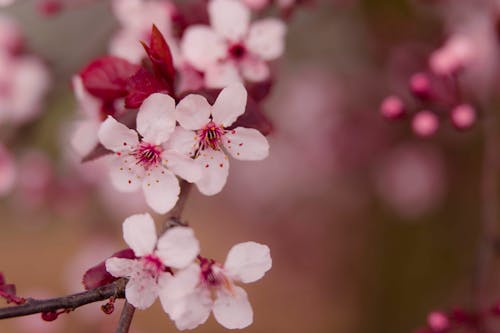The season for growing plums and planting damsons is from May until October in European countries but is slightly shorter in Japan where the season is from May to August. Plums are classed as drupes in that they have a hard stone pit that surrounds the kernels. Other fruits of the family include damsons, peaches, nectarines, bullaces, grapes and almonds. When dried they are classed as prunes.
The ideal growing conditions for plums is in a sunny position but if you choose the right variety they do well in a variety of climates. If you wish to cultivate these delicious fruits then it is probably worthwhile visiting your local nursery to see which varieties do well in your area.
Like most fruit trees plums can be trained against a wall in a fan formation, as bushes or in pyramids. They are not large trees so there is always a variety for your garden whether it is a large or small. If grown as a hedge they do not take up much room but do give an excellent crop as long as there are plenty of insects to pollinate the flowers although some are self-fertile.
Plums are an excellent source of Vitamin C and they contain neochlorogenic and chlorogenic acid, which is an excellent antioxidant and also aids the body to absorb iron.
Cultivation
Plums grow best in a sunny position in fertile soil that should retain moisture. You need to mulch in early spring. They do, however, cope better with drier soils than some other fruit trees. As you will note, the flowering season starts when there is still a chance of frost so try to plant them in a frost-free environment or against a wall. If there is a risk of frost smaller trees and trained varieties should be covered when in blossom. If the weather is suitable and the soil conditions are good trees can be planted from autumn to early spring. If you are going to train your trees into fans then they should be 10 to 15 feet apart (3-4.5m) but this may vary if you are planting larger trees where they may need up 25 feet, (7.5 m). If you have a heavy crop of fruit always thin the fruit so they are 2 to 3 inches apart (5-8 cm) to improve the size of the fruits.
Pruning
If you are growing your plum in a fan, to maintain the shape, you will need to prune it in the spring concentrating on the sideshoots that are growing towards or away from the wall. The basic idea is to reduce the number of new shoots so they are about 6 in apart (15 cm). In the summer months you will need to prune back again so that there are approximately six leaves on each new shoot. If there are gaps in your framework allow shoots to grow to fill these in. Finally, in autumn, when you have gathered your fruits cut back the shoots again but this time so there are just three leaves.
Storage of fruits after harvesting
There are plums that can be used for desserts or for cooking. If you are going to store or preserve your fruits, i.e. make delicious jams, pick a little earlier than you would if you were going to eat them straight from the tree. Remove the stones but keep the stalk on the fruit as they can then be bottled or frozen for later use. Damsons can be eaten when they are ripe or, once they have a good colour, they can be cooked.
Pests and Diseases
As with all fruits there are dangers out there from all kinds of creatures. Birds love these fruits and wasps, aphids and moths, the latter especially in the winter months can take their toll. There are a few diseases such as brown rot, canker and silverleaf and if the trees becomes affected by the latter two diseases you should remove the infected parts and burn them at once as these diseases do spread if not controlled rigorously.

